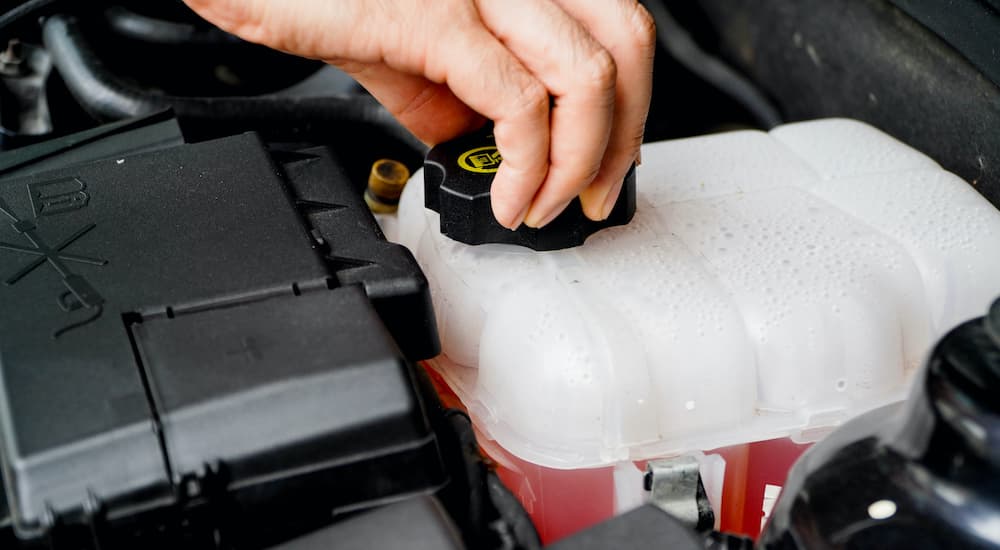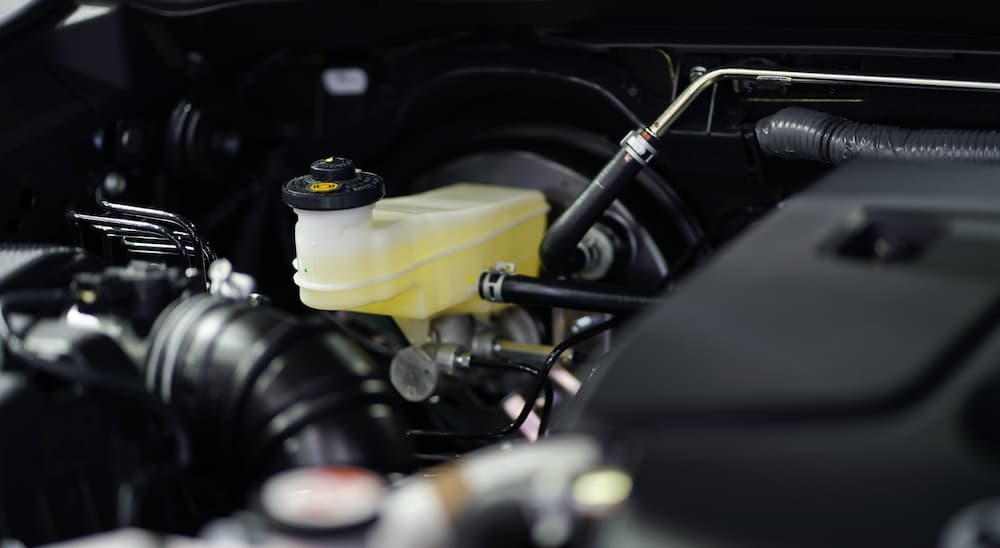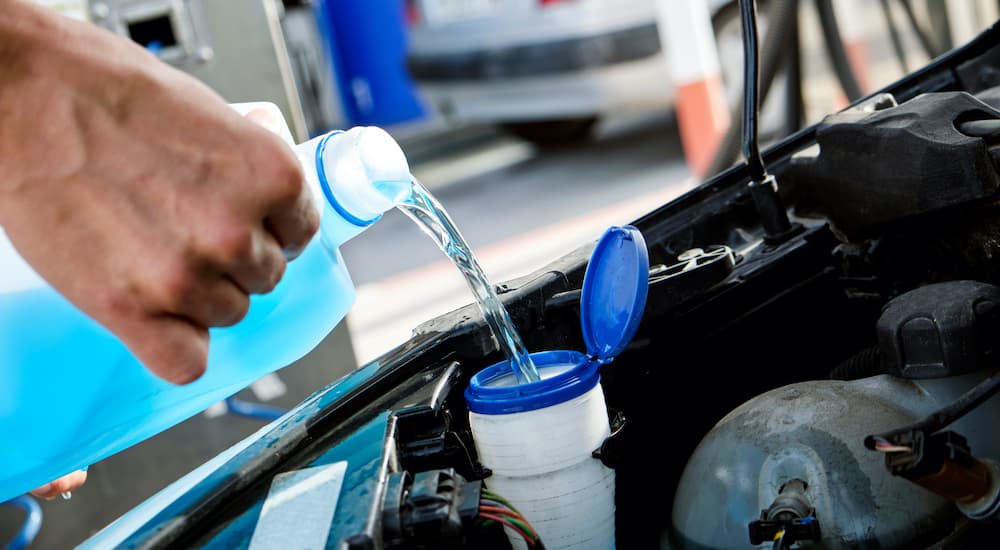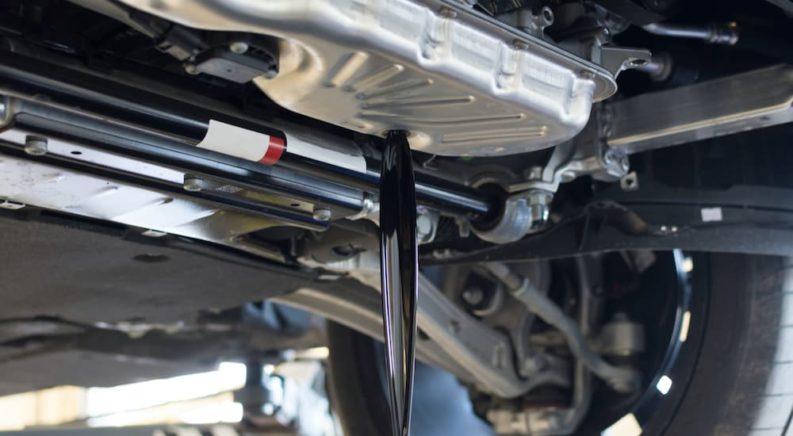While Base Commander Jack D. Ripper might’ve been concerned about the perceived international Communist conspiracy to sap and impurify all of our precious bodily fluids, I’m more concerned about the fluids in your car. Since you no doubt see advertisements for an oil change near you on a near-daily basis, I likely don’t need to remind you about that, but what about the rest of the fluids in your vehicle? Have you had them changed or flushed lately, and if not, do you at least check them regularly and top them up as needed?
This is the kind of simple, routine maintenance that’s at the heart of at-home car care and service; the sort of thing that everyone can do. You don’t need to have years of experience working on vehicles or even know how to change a tire to check and add fluid to your vehicle as needed. Some of this can help you avoid the time and money you’d otherwise need to spend for a professional to handle it for you, plus it’s a great way to spot a potential issue before it becomes a much bigger problem. Let’s take a look at some of the most common sorts of fluid checks and additions you can do.

Basics before Checking Your Car’s Fluids
Before we get into the specific sorts of fluids you can check, let’s take a quick moment to go over some basics. For starters, you don’t need to check these on a daily basis, but it’s a good idea to give some of them a quick check about once a month–especially your engine oil. If you notice any strange fluids on the ground under or around your vehicle, then it’s also a good idea to have a look and make sure you’re not low on anything before you start driving. Seeing fluid under your vehicle and being low likely indicates a leak somewhere that needs to be fixed.
You’ll want to make sure your vehicle is off when you check all of these things and that the fluid in question is at a safe temperature–some of these can be quite dangerous when hot. Make sure your vehicle is parked on level ground so that all of the fluids in reservoirs are level and not sloshed to one side. You’ll probably also want to wear some grubby clothes for this because you’ll likely get dirty and have some paper towels or a good supply of rags, along with a funnel–disposable paper funnels work very well for refilling fluids in your vehicle. Finally, it’s a good idea to wear nitrile gloves when doing all of this–it’s not just about keeping your hands clean; the fluids in your vehicle can be quite toxic and not something you want on your skin.
One – Engine Oil
The oil in your engine keeps everything lubricated properly to avoid excess heat buildup and prevent damage to the engine while it operates. To check the oil level, simply locate the dipstick for the oil in your engine; pull it out, wipe it clean, reinsert it, then pull it out again to check the level of the oil. For the most accurate reading, check the oil about five minutes after the engine has run for a bit. It should be between a minimum and maximum level on the stick–if it’s too low, then simply add some of the same type of oil already in your engine, but not too much–too much oil is nearly as bad as too little. And remember that this is just a top-up; you still need to have your oil changed on the schedule recommended by the manufacturer.

Two – Engine Coolant
You don’t need to check your coolant as often as something like your motor oil, but it’s always a good idea to keep an eye on it when you’re already under your hood. One of the most important things to know is that you should never remove the cap on your coolant reservoir if the engine is hot–scalding steam and pressurized coolant can spray out and seriously injure you. As long as your vehicle is cool, you can check the coolant in its reservoir to make sure there’s enough and that it still looks good, not dark or dirty–if you need to top it off, use the same type of coolant that’s already in it, but low coolant means you have a leak somewhere that needs to be fixed.
Three – Transmission Fluid
This one can be tricky and really depends on the vehicle you have. Most transmission fluid should probably last throughout the lifetime of your vehicle, but it can be worth checking if your transmission feels off. Your vehicle might have a dipstick you can check, or a reservoir you’ll need to look at, but some models make it a lot harder to check this fluid. If you do have a dipstick on it, you can check it the same way as your motor oil; if you find that it’s low, then you may have a leak that needs to be fixed. Remember that different types of transmissions have very different fluid requirements, and using the wrong fluid is a quick way to kill your transmission.

Four- Brake Fluid
Your vehicle’s manual will indicate how often you should check your brake fluid, but it’s not a bad idea to keep an eye on it routinely. If your brakes feel soft or not as responsive as they should be, then check the fluid levels to see if it’s low. You can usually find a brake master cylinder near the back of the engine bay in your vehicle, which you can check to see if the fluid levels are at or near the fill line. If the level is too low, you can add more fluid, but keep an eye on it since this might mean you have a leak in your brake line. Old brake fluid also needs to be replaced, so check the color as well as the fluid level.
Five- Power Steering Fluid
The power steering fluid in your vehicle will likely only need to be checked about every 50,000 miles, but if your car’s steering feels difficult or sluggish, then it’s a good thing to look at. You should be able to find a reservoir with the word “Steering” on the cap. Its location really depends on your vehicle, and it might have a dipstick, but that’s not a guarantee. Make sure you use the proper power steering fluid if it does need to be refilled, and look for signs of a leak if it’s low. Many modern vehicles use electric power steering, so if you don’t see the power fluid reservoir, your vehicle might not have one.
Six- Air Conditioning Refrigerant
Unfortunately, the Air Conditioning (A/C) refrigerant (commonly known as “Freon”) for your vehicle is usually not easy to check, as there’s typically not a dipstick that you can simply use. The good news is that most A/C recharge kits will include a gauge and thermometer that you can use to check the refrigerant in your car’s A/C system, or you can buy one separately. The A/C recharge kit or gauge you buy will have instructions for how to properly check the refrigerant levels and temperature in your system, and be sure to check your owner’s manual for the right kind of fluid if you do need to refill it.

Seven- Windshield Washer Fluid
One of the simplest things to check is the windshield washer fluid for your vehicle, which you should check about once each month, so you’re not surprised by it being empty when you need it. There should be a plastic tube near your engine, often on the passenger side, which will have a symbol on it indicating the windshield wiper fluid. If your washer fluid looks low, then you can simply open this cap and pour more fluid into it–it’s cheap and available at pretty much every gas station and auto repair store. Just make sure to get a cold-weather version if you are driving in a colder climate so that it won’t freeze when the temperatures fall.

